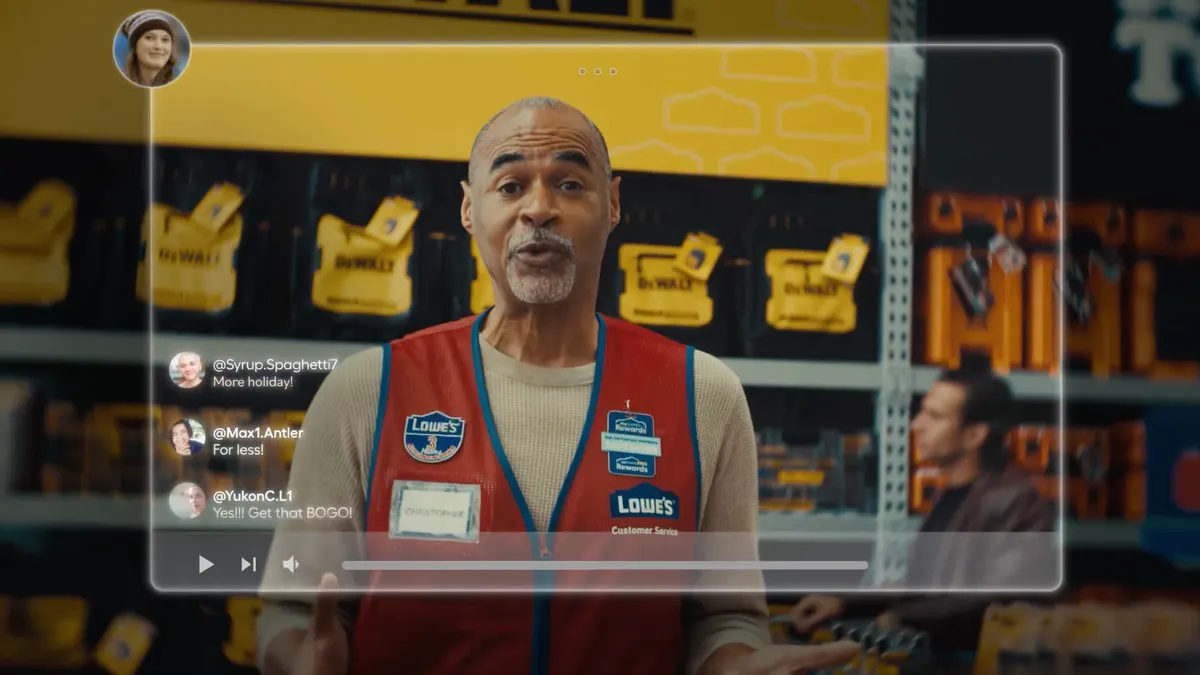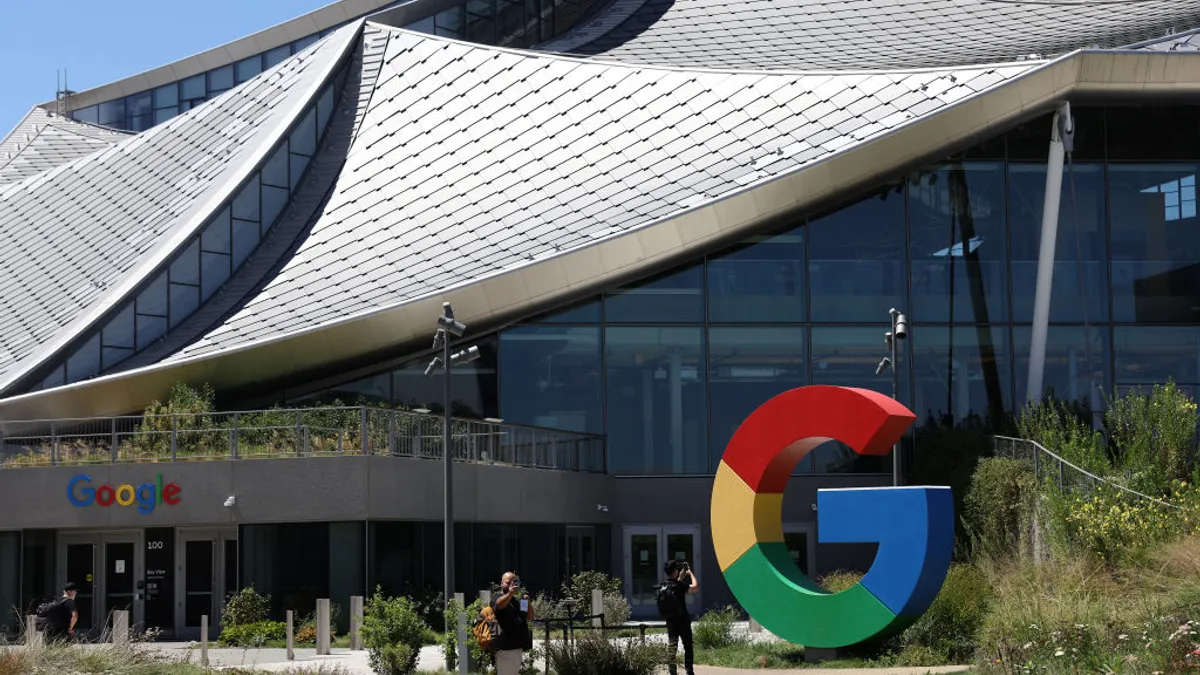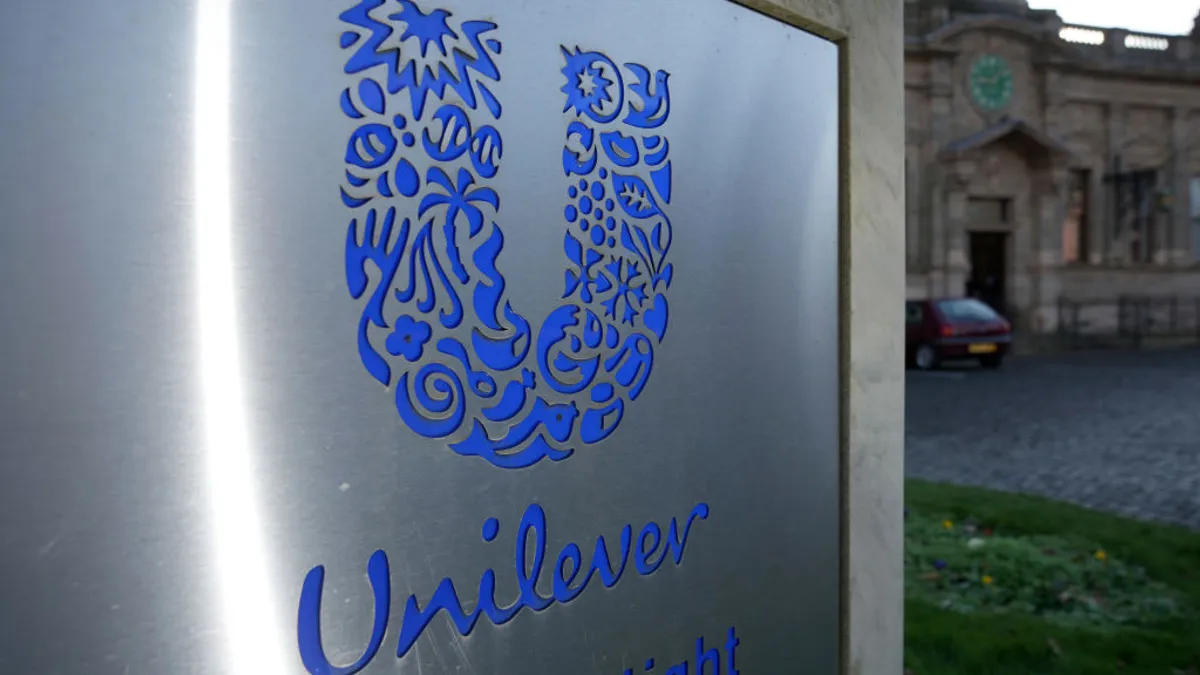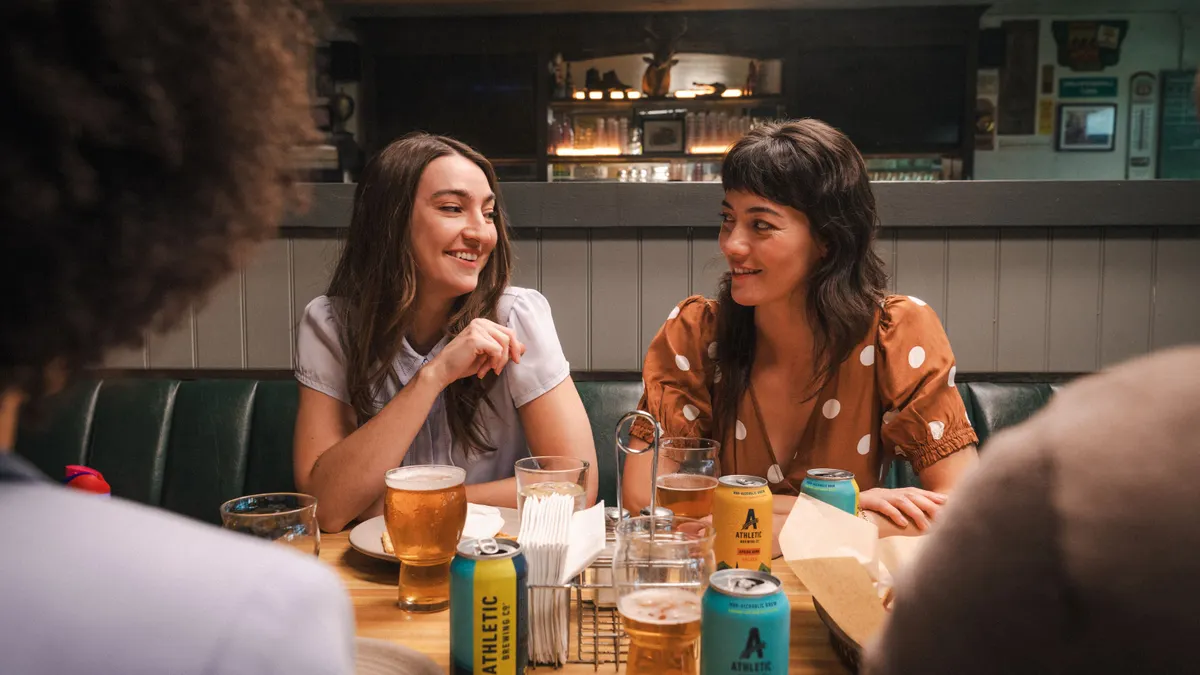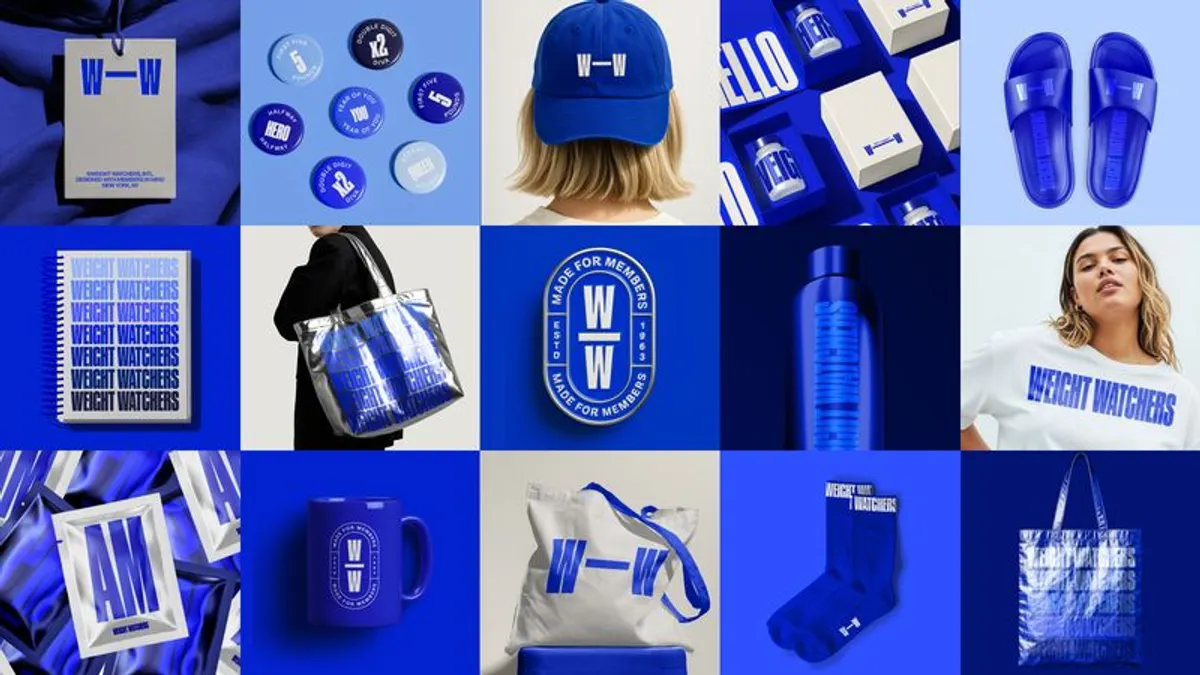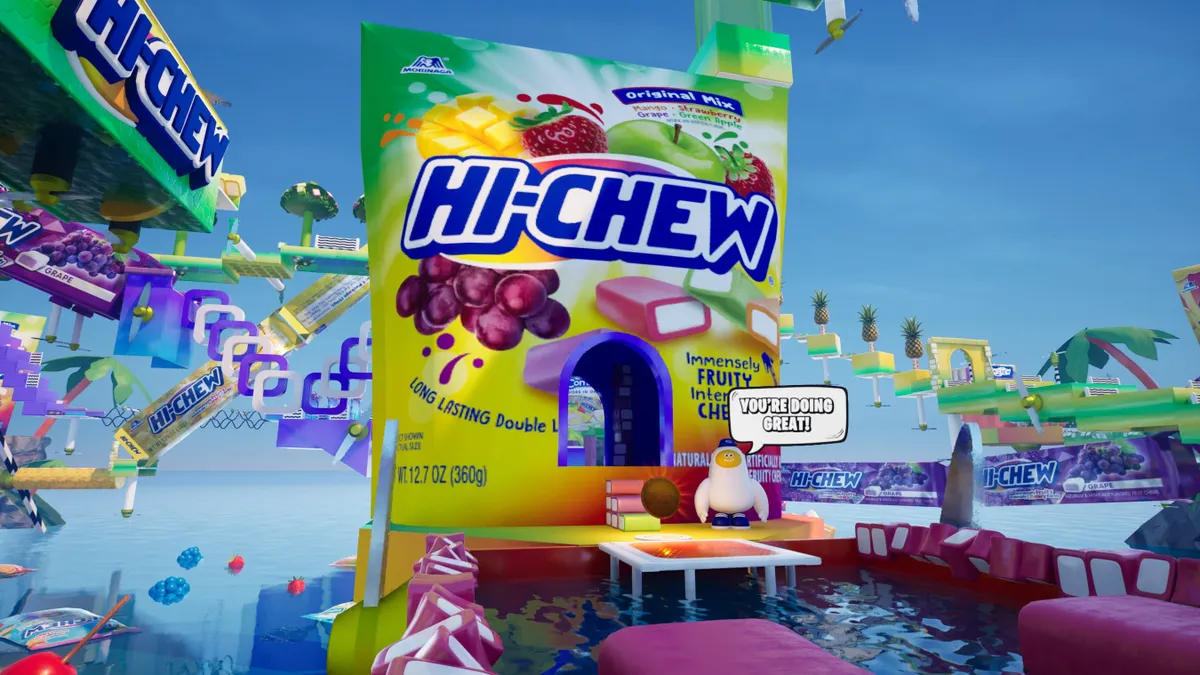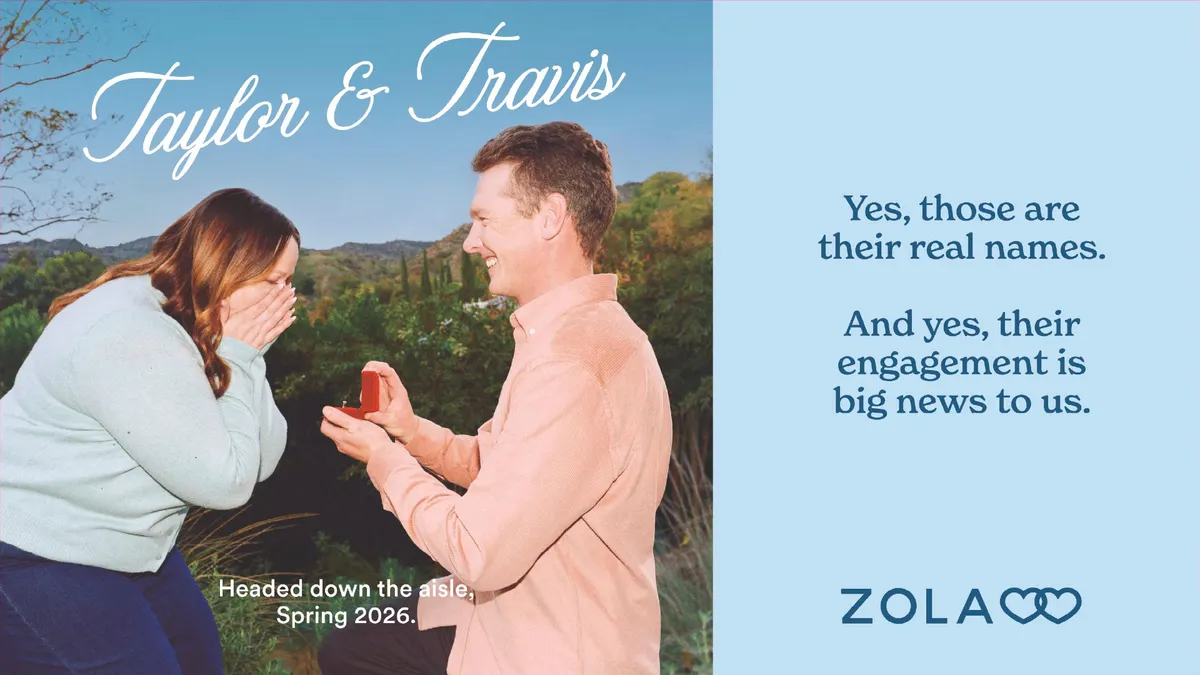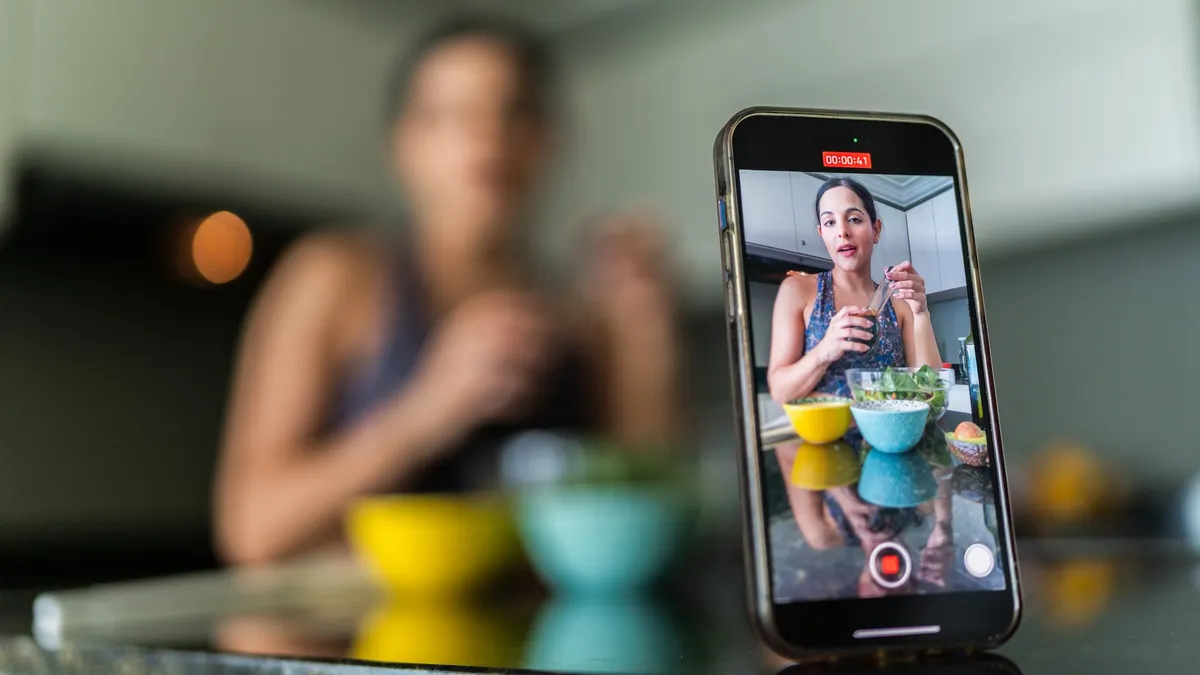Lowe’s beat Wall Street’s expectations for its quarter ended Aug. 1, with comparable sales increasing 1.1% versus the year-ago period. But executives on an earnings call noted that the retailer is still working through short-term challenges specific to the home improvement sector like high mortgage rates and a depressed housing market, in addition to the more broad-based challenge of cautious, value-focused consumers.
To help it navigate a rocky landscape, Lowe’s brought more football stars into the fold as part of its partnership with the NFL; tapped into an artificial intelligence-driven partnership between Palantir and Nvidia around its supply chain; and developed a holiday shopping season program full of in-store experiences, deals and new merchandise.
Lowe’s will promote its holiday offerings with a series of 15- and 30-second ads that imitate the look and feel of how consumers research, shop and share via smartphones. A hero spot focuses on a woman who wonders, “Gifts, decorations — how will we afford the holidays?” before showcasing Lowe’s product mix, rewards program and AI-powered shopping assistant.
Other spots center on holiday decor envy and the “holiday emergency” of a broken refrigerator. In kind, Spanish-language spots focus on holiday traditions and Lowe’s merchandise and loyalty offerings. The campaign was created with Dentsu Creative.
Marketing Dive spoke with Lowe’s CMO Jen Wilson about the brand’s approach to its holiday campaign, how it is engaging with different generations of consumers and how it is measuring the success of in-store experiences and its recently launched creator network.
The following interview has been edited for clarity and brevity.
MARKETING DIVE: What’s the strategy behind the holiday campaign?
JEN WILSON: The driving force was to push out of category conventions and meet consumers where they are. In the places where we are airing the film, on traditional linear TV, we wanted it to be disruptive and we wanted it to be indicative of where people are spending their time, which is on their mobile devices. What if we took a social-first approach to the creative and plugged into where we know people are going to be consuming most of their holiday content anyway?
You’ll see, in large part, us really paying off our position around being the most helpful brand in home improvement and the ways that we do that throughout the holidays. One of the big ways is that our members get more, and that’s a differentiating value proposition for Lowe’s versus our primary competitors. Another one is by curating the best merchandise and experiences, so you’ll see decorations and gifting play a big role in the film.
How does that social-first approach come to life, especially for younger consumers?
We’re calling it “everything shoppable and social” because everything that we’re moving out, even across connected TV and online video, is going to be shoppable with QR codes. Then there’s a social-first film approach, where we’ve got consumers who are coming in to Lowe’s with problems to solve and they’re talking through their phone. It’s indicative of the world that we live in and illustrative of meeting people in their language.
Millennials and Gen Zers, especially, who are an important audience for us to grow, don’t shop the way that we used to growing up. They are very impulse-driven. They don’t see themselves, per se, as DIYers. They want to be able to have a reason to go in and have a shopping trip or make a shopping trip and come to a store.
We did a body of research about six months ago that dove deep into this Generation Alpha mindset, and it turns out that they have a ton of influence. Parents of Gen Alpha said that they are heavily influenced by where their kids want to shop and the brands that their kids love. As a home improvement retailer, we had to start thinking differently about how we could become relevant, particularly as the average age of a homeowner is getting older and older. How do we stay relevant with these younger audiences? How are they going to know what Lowe’s is?
What role does the Lowe’s Creator Network play in reaching younger consumers during the holidays?
Gen Alpha is a driving force behind why we wanted to link that partnership [with MrBeast] together. Yes, he’s the largest influencer in the world, but then he’s got MrBeast Top Holiday Picks for gifts that he’s endorsing, and so he’ll have his own storefront on Lowes.com. We want to continue to help those consumers understand what Lowe’s is about. We’re not just for bricks and sticks. We sell other things, too, and we offer services that are of interest as well.
Our technology investments have been accelerated and fairly significant to stand this up. There are some mass retailers who are a little bit further ahead of us, and we’re catching up, but for us in home improvement, at least, and our direct competitors, we are probably the most advanced. We have a really clear recruiting strategy around more micro-influencers who fit the brand's needs where their communities are.
How are you measuring the success of the creator network?
We want to make sure that, if it’s a pro, that they’re not just talking about drills, that they’re talking about multiple product categories and ways that they engage with our brand. Similarly, with homeowners… we want more and more of our creators to be able to to be more generalists for the home so that they can speak to the multifaceted ways that Lowe’s can serve consumers, whether through products or services.
We also have recently stood up the ability for these influencers to create their own storefront so they can make their custom storefronts and have direct links to the products. That capability launched about a month ago [and we have] great results from that.
Where I want to take this network is to be able to track omnichannel sales through the creator network. That will probably be where this industry explodes, when they can start getting multi-touch attribution or measuring for multiple forms of the purchase.
Experiential and loyalty are a large part of Lowe’s holiday plans. How do you measure the success of those strategies?
Looking at attendance of our kids events as an example, we have more than 2 million kids who have participated in our workshops, year to date. Right now, we have 150 slots per month that we open per store, and those sell out within minutes.
As we look at our loyalty program holistically, we’re really pleased. We see that members are outspending non-members by 50%. We see our comp visits by some members are in the double digits, so they’re returning significantly more frequently.
How we measure success around Gen Z, Gen Alpha and even millennials is about brand preference. We look at consideration, too, but our consideration is really strong in the home category versus all of our primary competitors. We measure preference as a baseline, and then check in on that and share of wallet every quarter and see if we are making gains with those generations. That’s one of our primary objectives as a marketing team over the last two years.


